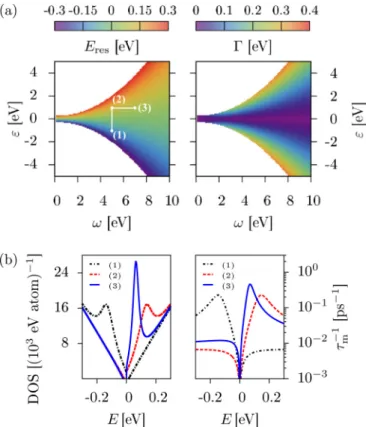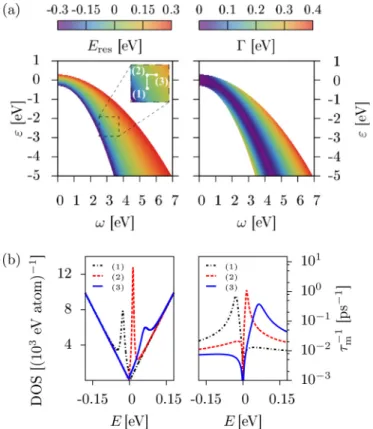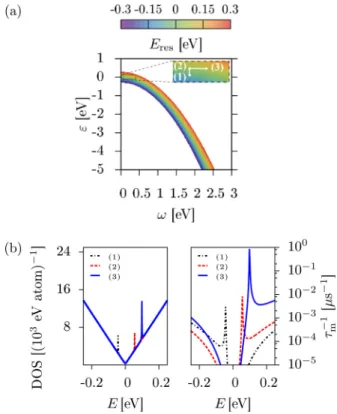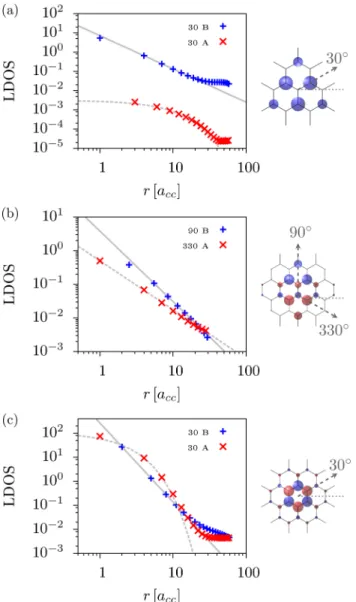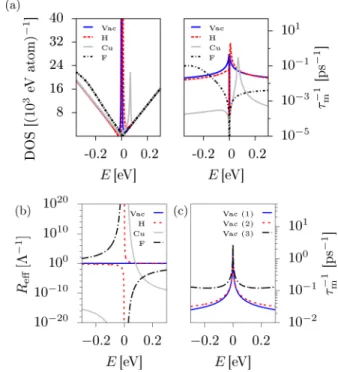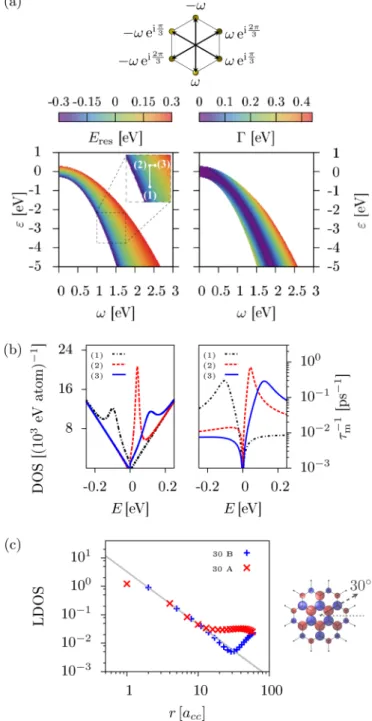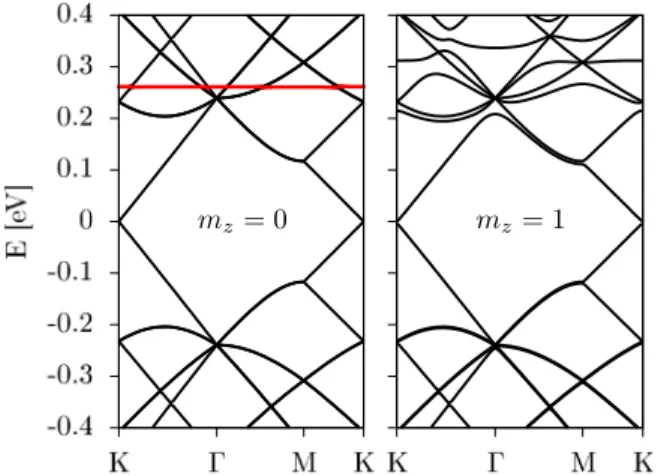Resonant scattering due to adatoms in graphene: Top, bridge, and hollow positions
Susanne Irmer, * Denis Kochan, Jeongsu Lee, and Jaroslav Fabian Institute for Theoretical Physics, University of Regensburg, 93040 Regensburg, Germany
(Received 22 December 2017; published 15 February 2018)
We present a theoretical study of resonance characteristics in graphene from adatoms with s or p
zcharacter binding in top, bridge, and hollow positions. The adatoms are described by two tight-binding parameters: on-site energy and hybridization strength. We explore a wide range of different magnitudes of these parameters by employing T -matrix calculations in the single adatom limit and by tight-binding supercell calculations for dilute adatom coverage. We calculate the density of states and the momentum relaxation rate and extract the resonance level and resonance width. The top position with a large hybridization strength or, equivalently, small on-site energy, induces resonances close to zero energy. The bridge position, compared to top, is more sensitive to variation in the orbital tight-binding parameters. Resonances within the experimentally relevant energy window are found mainly for bridge adatoms with negative on-site energies. The effect of resonances from the top and bridge positions on the density of states and momentum relaxation rate is comparable and both positions give rise to a power-law decay of the resonant state in graphene. The hollow position with s orbital character is affected from destructive interference, which is seen from the very narrow resonance peaks in the density of states and momentum relaxation rate. The resonant state shows no clear tendency to a power-law decay around the impurity and its magnitude decreases strongly with lowering the adatom content in the supercell calculations. This is in contrast to the top and bridge positions. We conclude our study with a comparison to models of pointlike vacancies and strong midgap scatterers. The latter model gives rise to significantly higher momentum relaxation rates than caused by single adatoms.
DOI: 10.1103/PhysRevB.97.075417 I. INTRODUCTION
In the past decade, graphene research has made remarkable progress; from its first experimental characterization [1], the way was paved towards high-quality graphene devices [2,3]
and proximitized graphene as ingredients for electronic and spintronics applications [4–9].
Graphene was the first realized two-dimensional crystal material with a linear dispersion at low energy. As the low- energy electrons can be described by an effective Dirac equation for massless fermions, graphene was suggested for studies of relativistic effects such as Klein tunneling or zit- terbewegung [10]. Apart from this fundamental interest in the two-dimensional carbon allotrope, efforts were taken to tailor graphene properties for electronic and spintronics devices.
On the one hand, proximity effects in graphene were explored. It was found that exchange interaction can be induced in graphene by placing it on a ferromagnetic insulator [11] or, separated by a tunnel barrier, on a ferromagnetic metal [12]. Additionally, proximity-induced large spin-orbit coupling [13,14] can cause topological effects [15], giant spin lifetime anisotropy [16–18], and, together with proximity exchange, transport magnetoanisotropies [19]. On the other hand, local adsorbates on graphene can be used to function- alize graphene. For example, graphene’s intrinsic spin-orbit coupling—of the order of 10 μeV [20]—was shown to be increased by more than a factor of 100 by adatoms, such
*
